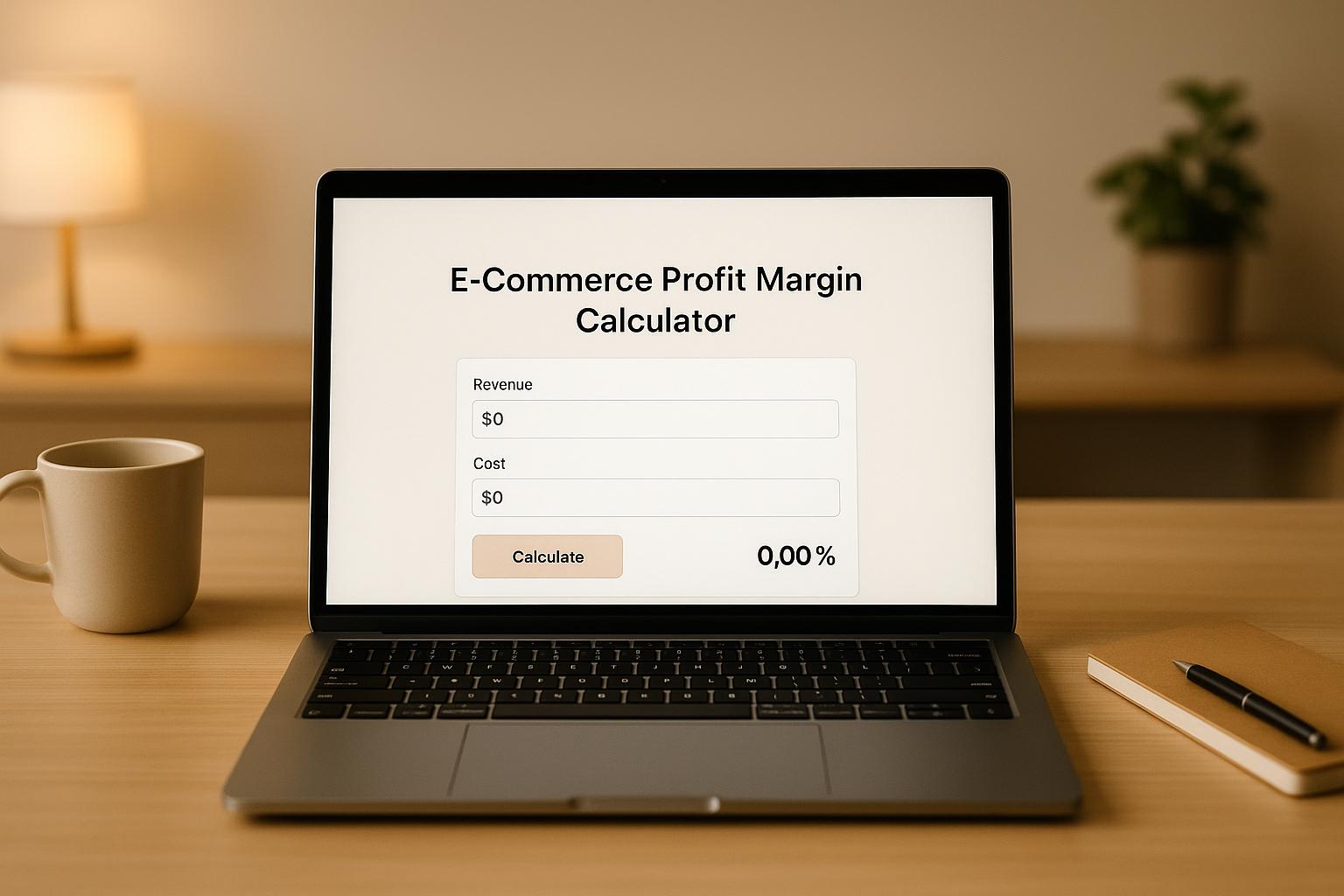Geo-Targeting and AI: Boosting Local Sales
Geo-targeting, powered by AI, is transforming how businesses connect with local customers, driving higher sales and improving marketing efficiency. By combining location data with AI-driven insights, businesses can deliver personalized ads, promotions, and content tailored to specific regions, cities, or even neighborhoods. Here’s what you need to know:
- What is Geo-Targeting?: It uses a customer’s location (via GPS, IP, or user profiles) to provide relevant ads or offers. For example, a person in Miami might see summer deals, while someone in Seattle gets raincoat promotions.
- How AI Improves It: AI analyzes real-time and historical data, including weather, time, and shopping habits, to predict customer needs and refine campaigns. This precision leads to better engagement and higher conversion rates.
- Why Local Sales Matter: Local searches account for one in three mobile searches in the U.S., signaling high purchase intent. Businesses targeting local markets can build stronger customer relationships while reducing marketing costs.
- Key Benefits: Personalized engagement, smarter resource allocation, and real-time adjustments ensure businesses maximize returns on their marketing spend.
- Examples: McDonald’s increased foot traffic by 20% with AI-powered ads, and Dunkin’ boosted app usage with location-based promotions.
AI-powered geo-targeting isn’t just about technology - it’s about understanding and meeting local customer needs. Businesses that integrate these tools can scale efficiently, remain competitive, and build lasting customer loyalty.
Boost Your Local Business with Geo-targeted Advertising
Key Benefits of AI-Powered Geo-Targeting for Local Sales
AI-powered geo-targeting is changing the way e-commerce businesses connect with local customers. By analyzing vast amounts of location and behavioral data, it opens up opportunities that traditional marketing simply can't achieve. The result? Better customer engagement, smarter strategies, and more revenue.
Personalized Local Engagement
AI goes far beyond just pinpointing a customer’s location. It dives into customer behavior, local preferences, and regional trends to create tailored experiences. For example, weather-based campaigns can promote seasonal items - like offering raincoats during heavy rains or sunscreen during sunny spells. It can even tie promotions to local events, such as sports games or community festivals, ensuring messages resonate with local audiences.
AI also adjusts to regional shopping habits and preferences, fine-tuning product recommendations and marketing strategies. It even optimizes timing, delivering offers exactly when customers are most likely to engage - whether that’s during a lunch break in a bustling city or a quiet evening in suburban neighborhoods. This level of precision doesn’t just improve engagement; it ensures businesses allocate resources where they’ll have the biggest impact.
Smarter Resource Allocation
AI takes the guesswork out of budget planning by using data to pinpoint what works and where. Tools like performance heatmaps show which areas generate the highest conversions and customer value, helping businesses spot untapped opportunities or areas that need improvement.
Dynamic resource allocation means businesses can shift their focus to high-performing regions in real time. Seasonal trends also become easier to predict - like stocking up on outdoor gear before ski season or ramping up sunscreen promotions as spring break approaches. Plus, cost analysis ensures that ad spend aligns with the value of customers in different markets, making every dollar count.
Real-Time Campaign Adjustments
One of AI’s biggest strengths is its ability to adapt instantly. If a viral post suddenly drives traffic in a specific city, AI can increase ad spending there on the spot to capitalize on the buzz. On the flip side, if local events or news dampen shopping activity, campaigns can be paused or adjusted to avoid wasting budget.
AI also keeps an eye on competitors. If a rival ramps up their advertising, AI can tweak bids and messaging to stay competitive. It even monitors performance thresholds, testing new creative strategies or reallocating resources when results dip below expectations. All of this happens automatically, ensuring campaigns stay optimized without constant manual oversight.
Strategies for Effective Geo-Targeting in E-commerce
Geo-targeting works best when you understand how location influences consumer behavior and use that knowledge to shape your marketing. Combining geographic segmentation with AI-driven insights allows businesses to create experiences that resonate on a local level. These methods build on earlier ideas of personalized engagement and real-time optimization.
Geographic Segmentation Techniques
To make geographic segmentation work, divide your market into smaller, more specific areas - ranging from broad regions to individual postal codes. Instead of treating an entire state as a single market, focus on postal code-level data to uncover localized trends that might otherwise go unnoticed. This approach enables businesses to zero in on specific interests and behaviors within smaller communities, leading to more precise targeting[1][2].
Once these segments are identified, AI can take things a step further by tailoring them dynamically in real time.
Dynamic Personalization with AI
With AI, campaigns can adjust on the fly, ensuring that the right messages and offers reach the right audience at the right time. This dynamic personalization ensures your marketing always stays relevant to the unique needs of each area.
Localized Content and Promotions
Localized marketing involves tweaking your website content and promotional strategies to reflect the distinct preferences and characteristics of different regions. By aligning offers with local interests and seasonal trends, businesses can boost engagement and drive sales. Tools like Feedcast simplify this process by using a centralized dashboard and AI to fine-tune geo-targeting based on performance data.
Ultimately, successful geo-targeting depends on integrating geographic data into a broader customer profile. By combining AI insights with location data, businesses can refine their strategies to create a stronger local impact.
sbb-itb-0bd1697
Implementing AI-Powered Geo-Targeting: Tools and Technologies
To bring the benefits of geo-targeting to life, businesses need reliable tools and technologies. The right tech stack ensures smooth integration and lays the groundwork for accurate and efficient campaign execution, making geo-targeting efforts more effective.
Seamless Integration with E-commerce Platforms
Starting with AI-powered geo-targeting doesn’t mean you need to overhaul your entire system. Tools like Feedcast integrate effortlessly with popular platforms like Shopify, WooCommerce, and PrestaShop through APIs. This ensures that product data, inventory, and pricing stay updated in real time across different regions.
Adaptable data import capabilities are key. Platforms that accept various file formats - like Google Sheets, CSV, and XML - make it easier to include location-specific details, such as regional pricing, product variations, or localized descriptions. This adaptability is especially useful when tailoring products to local tastes or meeting state-specific regulations.
AI-Driven Campaign Optimization
Once your data is synced, AI takes over to optimize campaigns continuously. For instance, Feedcast leverages machine learning to create geo-specific ad copy tailored to each platform. Your Google Ads might highlight one set of product benefits, while your Meta campaigns focus on another, all while staying relevant to local audiences.
AI systems monitor key metrics - like click-through rates, conversion rates, and cost per acquisition - by geographic segment. High-performing locations are automatically identified, with budgets and targeting adjusted accordingly.
These systems also refine targeting by analyzing user behavior and purchase history. This dual approach not only helps attract new customers but also re-engages previous buyers with offers tailored to their location, ultimately boosting loyalty.
Centralized Reporting and Analytics
Unified analytics simplify monitoring by consolidating performance data from platforms like Google, Meta, and Microsoft Ads into a single dashboard.
With real-time metrics, businesses can quickly respond to shifts in local trends, weather, or events. For example, if outdoor equipment sales suddenly spike in specific ZIP codes due to unexpected weather, you can immediately increase ad spend in those areas while scaling back in regions where demand is lower.
Detailed performance segmentation goes a step further, analyzing results based on factors like location, device type, time of day, or customer demographics. This level of detail helps pinpoint the most profitable combinations - such as mobile users in suburban areas during evening hours - allowing for precise targeting and smarter budget allocation.
Customizable reports provide actionable insights for specific regions. If your organization includes regional managers or local marketing teams, automated reports can be tailored to show performance metrics for their territories. This makes it easier to align geo-targeting efforts across different teams and locations.
The integration of AI with reporting tools also enables predictive analytics. By reviewing historical data, AI can forecast which geographic areas are likely to perform best during upcoming campaigns or seasonal promotions. This foresight allows businesses to allocate resources strategically, ensuring campaigns hit the ground running.
Overcoming Challenges and Best Practices for Geo-Targeting
AI-driven geo-targeting opens up a world of possibilities for businesses, but it also comes with its fair share of challenges. To make the most of these tools, companies need to address potential hurdles head-on while adopting strategies that ensure campaigns are effective, compliant, and profitable.
Privacy and Compliance Requirements
One of the biggest challenges in geo-targeting revolves around privacy concerns and legal compliance. Since location data is often at the center of privacy debates, adhering to U.S. regulations like the California Consumer Privacy Act (CCPA) is non-negotiable. The CCPA mandates transparency about what location data is collected and gives consumers the right to opt out. Similarly, businesses operating in states like Virginia and Connecticut must navigate laws such as the Virginia Consumer Data Protection Act (VCDPA) and Connecticut's Data Privacy Act, which include comparable requirements.
To build trust and comply with these regulations, businesses should clearly communicate why they collect location data and how it benefits users. For instance, instead of vague statements like "We improve your experience", use specific explanations such as "We use your location to display nearby store availability and delivery options."
Offer users detailed consent options to respect their preferences. For example, some customers may be comfortable with city-level tracking but not with precise GPS data. Others might agree to location-based promotions but opt out of behavioral tracking. Giving users this level of control keeps targeting effective while honoring their choices.
Collect only the data you truly need. If your campaign focuses on state-level promotions, there’s no need to gather ZIP code-level details. This approach not only minimizes compliance risks but also makes data management more straightforward.
Finally, regularly audit your location data practices. Document how you collect, store, and delete data, and consider setting automatic deletion timelines - such as removing location data after a year - to reduce long-term exposure to compliance risks.
Balancing Personalization and Broad Reach
Finding the right balance between personalization and audience reach is another critical factor. Over-segmenting your audience can lead to higher costs and lower performance, as overly narrow geographic targeting limits your campaign's reach.
Start with broader geographic areas like metropolitan statistical areas (MSAs) or entire states, and then refine your targeting based on performance data. This approach allows you to identify high-performing sub-regions without prematurely fragmenting your audience.
Consider using a tiered targeting strategy. Allocate a portion of your budget to broad campaigns that cover larger regions, while reserving some funds for hyper-local tests. This way, you maintain a wide reach while exploring opportunities for more personalized messaging.
Avoid making assumptions about geographic preferences. For example, urban and suburban areas within the same city can have vastly different behaviors, while rural communities in separate states might share common traits. Let performance data guide your decisions rather than relying on stereotypes.
Smart budget allocation is essential to avoid wasting money on underperforming areas. Set performance benchmarks for each geographic segment, and reallocate budgets from regions with high costs and low conversions to those with better results. AI tools can help automate this process, ensuring resources are used efficiently.
Additionally, adjust your campaigns based on seasons and events. For example, during the back-to-school season, college towns might need targeted messaging, while the holiday shopping period could call for city-specific campaigns. These temporary adjustments allow you to seize timely opportunities without over-complicating your audience segmentation.
Continuous Learning and Optimization
Geo-targeting isn’t a “set it and forget it” strategy. To stay effective, campaigns need constant refinement. Factors like seasons, local events, and economic shifts can all impact performance, making ongoing optimization a necessity.
Establish regular testing cycles to evaluate and improve your geo-targeting efforts. For instance, test new geographic segments monthly, refresh localized ad copy every quarter, and conduct a full review of geographic performance annually. This ensures your campaigns stay aligned with market trends and audience behaviors.
AI can be a valuable tool for uncovering hidden patterns. For example, it might reveal correlations between geographic performance and factors like weather, local events, or economic conditions. These insights allow you to adjust campaigns proactively rather than reacting to performance dips after they occur.
Use cross-channel insights to enhance your geo-targeting strategy across platforms. Tools like Feedcast can centralize performance data from advertising networks like Google, Meta, and Microsoft Ads, making it easier to identify trends and optimize campaigns.
Documenting your successes and failures is equally important. Create playbooks that outline effective strategies for different regions, seasonal trends, and localization techniques. These resources can be a game-changer when launching campaigns in new markets or onboarding new team members.
Keep an eye on your competitors, too. If your campaign performance suddenly drops in a particular region, competitor activity might be the cause. Regular competitive analysis helps you differentiate between internal issues and external market shifts.
Finally, set up automated alerts to monitor significant changes in key geographic segments. For example, if conversion rates in a major market drop by 20%, an alert can prompt immediate action to investigate and address the issue. Similarly, alerts for unusually strong performance can highlight successful strategies that might work in other regions.
Conclusion: The Future of AI-Powered Geo-Targeting
E-commerce advertising is changing fast, and AI-powered geo-targeting is right at the center of this transformation. Throughout this guide, we've seen how blending artificial intelligence with location-based marketing creates new ways for U.S. businesses to connect with local customers. This shift is not just about improving customer engagement - it’s about driving measurable growth in local sales.
By adopting AI-driven geo-targeting, businesses can allocate resources more efficiently, make real-time campaign adjustments, and strengthen local engagement. These tools help brands build deeper connections within their communities, creating relationships that go beyond mere transactions.
To succeed, businesses need a strategy that balances personalization with broader outreach, stays compliant with privacy laws like the CCPA, and focuses on ongoing optimization. Geo-targeting isn’t a one-and-done task - it’s an active, evolving conversation with local markets.
As we look ahead, the combination of AI and geo-targeting will only grow more advanced. Machine learning will refine its ability to predict local preferences, spot emerging opportunities, and adjust campaigns automatically. Businesses that invest in these capabilities now will be better positioned to adapt as the technology continues to evolve.
For those ready to take the next step, platforms like Feedcast offer a great starting point. Feedcast simplifies campaign management across Google, Meta, and Microsoft Ads while using AI to optimize performance. With centralized data insights, businesses can track geographic trends and fine-tune campaigns based on actual results - not guesswork.
AI-powered geo-targeting equips businesses to think on a global scale while acting with local precision. By turning location data into actionable insights, companies can boost sales and gain a competitive edge. Aligning technology with local knowledge is key to staying ahead in this fast-moving landscape.
FAQs
How can businesses use AI-powered geo-targeting while staying compliant with US privacy laws?
To comply with US privacy laws while leveraging AI-powered geo-targeting, businesses must focus on transparency and securing consumer consent. Always seek explicit permission before collecting and using location data, particularly when dealing with sensitive information. Using reliable consent management tools that adjust to users' locations and preferences can help meet the varying requirements of state laws.
Stay proactive by regularly reviewing privacy regulations like the California Consumer Privacy Act (CCPA) or Virginia’s Consumer Data Protection Act (CDPA). Keep an eye on updates to federal or state laws to ensure your practices remain aligned. Additionally, adopt data minimization strategies by gathering only the data essential for your campaigns and safeguarding it with robust protection measures.
How can businesses effectively combine personalized marketing with broad reach in geo-targeting campaigns?
To strike the right balance between personalized marketing and broad reach in geo-targeting campaigns, businesses should begin by identifying key geographic areas to focus on. From there, crafting flexible messaging that appeals to a variety of audiences is essential. Leveraging AI-powered tools can make this process smoother by creating ads tailored to user preferences and behaviors, ensuring relevance without compromising on scale.
Another effective strategy is to combine broad geographic targeting with additional data, such as demographics, interests, or purchasing habits. This layered approach allows businesses to provide personalized experiences while still reaching a large audience. The result? A marketing strategy that connects with local audiences while delivering a wider impact.
How does AI improve geo-targeting campaigns and what benefits do these improvements offer?
AI takes geo-targeting to the next level by analyzing real-time data and fine-tuning campaigns to zero in on the most responsive areas. This means ads are shown to the right people at the right moment, making them more relevant and effective.
With these instant adjustments, businesses can get more out of their advertising budgets, increase customer engagement, and see better ROI. By adapting to changes in audience behavior and market trends, AI-powered geo-targeting keeps campaigns efficient and impactful.
Geoffrey G.




